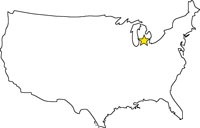Maintaining Traffic Sign Retroreflectivity
1st Feb 2019
The 2009 MUTCD Traffic Sign Guidelines for minimum reflectivity, minimum sizes, legends, symbols and fonts.
The Federal Highway Administration has five different ways for agencies to assess the retroreflectivity of traffic signs.
Visual Nighttime Inspection
With visual nighttime inspection method, the sign inspector assesses the traffic signs as they approach the sign for visibility and retroreflectivity of the road sign. If the sign meets the comparison samples defined in the appropriate procedure. Comparison sign samples can be purchased from Dornbos Sign & Safety Inc. of different colors and grades of 3M High Intensity Prismatic, and 3M Diamond Grade Cubed for traffic sign inspectors to use.
Measured Retroreflectivity Method
A sign retroreflectivity gun his used in this method to measure the reflectivity of the sign on the road with the minimum retroreflectivity allowed.
Expected Sign Life Method
With the Expected Sign Life Method, individual signs are replaced before they reach the end of their expected service life. With this method the agency must know what the expected life of the sign material they are using on their signs.
Engineer Grade Prismatic – 7 years
High Intensity Prismatic – 10 years
Diamond Grade Cubed – 12 years
The road agency must have a way to identify the age of their signs and replace them before they reach their minimum retroreflectivity levels. Dornbos Sign & Safety Inc. has been manufacturing sign dating stickers for road departments for many years. We have many different styles to choose from. We’ll add your city street department, county road department or state highway departments name and information on your sign dating decals.
Blanket Replacement Method
Using this method, the road agency replaces all the MUTCD traffic signs in a specific area, township or corridor, or of a given type of sign, at specific time intervals.
Control Sign Method
With the Control Sign Method, a control sample of signs is used to represent the total population of an agency’s signs. The retroreflectivity of the control sign is monitored at appropriate intervals and sign replacement is based on the performance of control signs.




